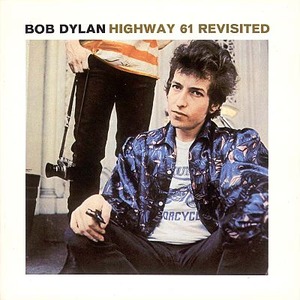Fact #39511
When:
Short story:
Full article:
HIGHWAY 61 REVISITED
by Johnny Black
Highway 61 Revisited followed just six months after the semi-electrified Bringing It All Back Home, and this time Dylan's electricity crackled and fizzed from every groove.
Guitarist Mike Bloomfield once claimed that the Highway 61 sessions were chaotic because, "no-one had any idea what the music was supposed to sound like." Neither Dylan nor producer Bob Johnston, according to Bloomfield, directed the musicians. "It was a matter of pure chance." According to Johnston, it was more a matter of simply choosing the right musicians to start with, then giving them their creative head.
The opening swagger and swirl of Al Kooper's organ and Paul Griffin's piano on Like A Rolling Stone left no doubt that in a few short months Dylan had made a quantum leap and was now the king of a hill built by his own hand. Snarling and sneering his way through the vitriolic lyric, Dylan had never before sounded so confident. (He was certainly confident enough to release it as a six minute single against the advice of Columbia Records who insisted that radio wouldn't play anything over three minutes in length. It went top 5 on both sides of the Atlantic.)
Bloomfield's stinging lead guitar kicks Tombstone Blues into a higher rock'n'roll gear than Dylan had previously managed, but the album's real strength is not its style but its content. Songs like It Takes A Lot To Laugh, It Takes A Train To Cry and Ballad Of A Thin Man, are beautifully understated, with every instrument perfectly complementing Dylan's straggling melodies.
The lyrics too had leapt ahead, with virtually every line of Desolation Row elegantly conjuring word pictures that combine into a dark and surreal movie playing in the back of the listener's head.
Arguably, Highway 61 Revisited also marks the dividing line between rock'n'roll and rock. Here was a music too cerebral to be pop, too bluesy and ballsy to be folk-rock and, most significantly, it was also too sophisticated to be rock'n'roll.
Even forty years after its release, this is a hard album to fault. The worst that can be said is that it stands responsible for countless crimes against songwriting committed by legions of inferior artists who misguidedly imagined themselves to be the next Bob Dylan.
Tweet this Fact
by Johnny Black
Highway 61 Revisited followed just six months after the semi-electrified Bringing It All Back Home, and this time Dylan's electricity crackled and fizzed from every groove.
Guitarist Mike Bloomfield once claimed that the Highway 61 sessions were chaotic because, "no-one had any idea what the music was supposed to sound like." Neither Dylan nor producer Bob Johnston, according to Bloomfield, directed the musicians. "It was a matter of pure chance." According to Johnston, it was more a matter of simply choosing the right musicians to start with, then giving them their creative head.
The opening swagger and swirl of Al Kooper's organ and Paul Griffin's piano on Like A Rolling Stone left no doubt that in a few short months Dylan had made a quantum leap and was now the king of a hill built by his own hand. Snarling and sneering his way through the vitriolic lyric, Dylan had never before sounded so confident. (He was certainly confident enough to release it as a six minute single against the advice of Columbia Records who insisted that radio wouldn't play anything over three minutes in length. It went top 5 on both sides of the Atlantic.)
Bloomfield's stinging lead guitar kicks Tombstone Blues into a higher rock'n'roll gear than Dylan had previously managed, but the album's real strength is not its style but its content. Songs like It Takes A Lot To Laugh, It Takes A Train To Cry and Ballad Of A Thin Man, are beautifully understated, with every instrument perfectly complementing Dylan's straggling melodies.
The lyrics too had leapt ahead, with virtually every line of Desolation Row elegantly conjuring word pictures that combine into a dark and surreal movie playing in the back of the listener's head.
Arguably, Highway 61 Revisited also marks the dividing line between rock'n'roll and rock. Here was a music too cerebral to be pop, too bluesy and ballsy to be folk-rock and, most significantly, it was also too sophisticated to be rock'n'roll.
Even forty years after its release, this is a hard album to fault. The worst that can be said is that it stands responsible for countless crimes against songwriting committed by legions of inferior artists who misguidedly imagined themselves to be the next Bob Dylan.
